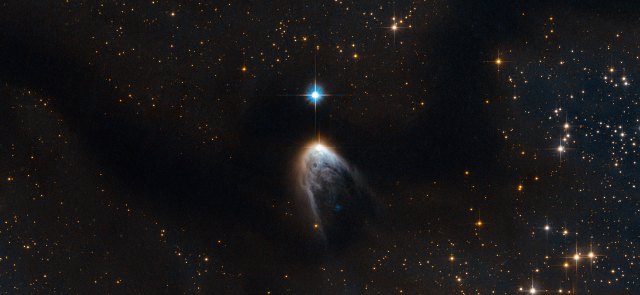Nasa Releases New Hubble Space Telescope Images of A Star Being Violently Born
I sure hope the universe got an epidural.
Man, human babies have it easy. All they have to endure is the trauma of being forced out of a uterus. You know what stars have to deal with when they’re being born? Massive amounts of nebula cloud gas being violently twisted by radiation and coalescing into exploding balls of fire. At least they’re pretty, though, right?
The above Hubble image (click to embiggen) is of IRAS 14568-6304, which is located within the Circinus molecular cloud, which has a mass around 250,000 times that of the sun and is filled with gas, dust, and other young stars. The large region in which this particular forming star is located, Circinus-West, has a mass 5000 times that of the sun and is one of the most prominent star forming sites in the entire cloud.
IRAS 14568-6304 is just one of several “outflow” sources in this clump, making it one of the brightest and most massive star-forming regions ever reported. Some scientists even want to start calling this region the “nest of molecular outflows” to mark its energetic outflow.
Of course, that’s not the only thing that makes this star interesting (you know, in addition to being super gorgeous to look at).
IRAS 14568-6304 is special because it is driving a protostellar jet, which appears here as the “tail” below the star. This jet is the leftover gas and dust that the star took from its parent cloud in order to form. While most of this material forms the star and its accretion disc — the disc of material surrounding the star, which may one day form planets — at some point in the formation process the star began to eject some of the material at supersonic speeds through space.
NASA believes that this phenomenon can provide astronomers with further clues and evidence about the exact process by which stars are formed. It’s also sure to be prominently featured on hundreds of self-published science fiction book covers from here on out. Which, hey, we’re not complaining. Just look at it, man. That is straight-up space opera inspiration if I’ve ever seen it.
(image via NASA)
- A group of citizen scientists have made contact with retired satellite ISEE 3
- The Milky Way could contain 100 million planets capable of life
- Identical twin astronauts will test the effects of space on humans
Have a tip we should know? tips@themarysue.com
